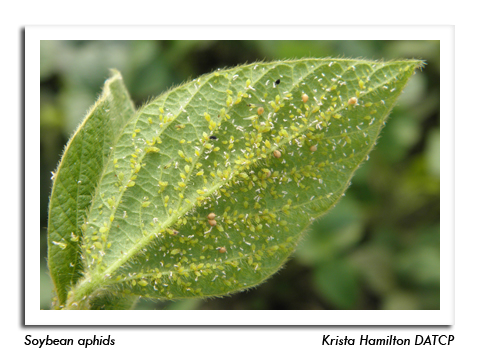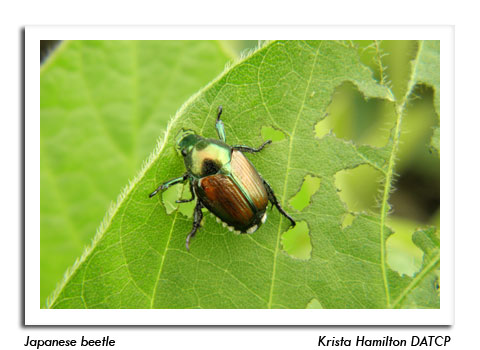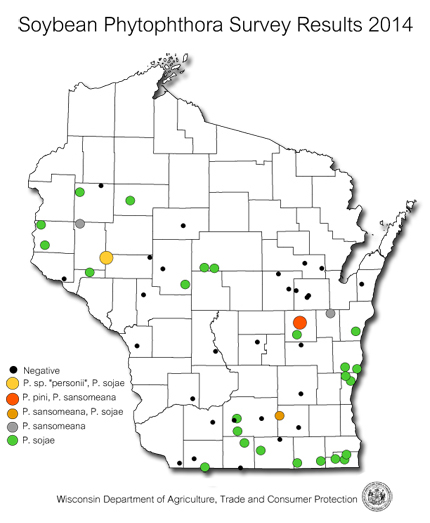
 |
|
|
Soybeans
Volume 59 Number 18 Date 11/13/2014 SOYBEAN APHID - Densities increased to economically significant levels in about 20% of surveyed fields in late August, though most fields had low or moderate populations this season and control measures were generally not needed. The first aphids of the year were found on June 10 and densities remained extremely low throughout July at fewer than five aphids per plant. By mid-August, counts were still mostly below 20 per plant, although some isolated sites had developed economic populations above the 250 aphid-per-plant threshold. The average count of 118 aphids per plant documented in late August was a substantial increase over the average of only four per plant during the July portion of the survey and, as noted, approximately 20% of surveyed fields may have required treatment for aphid control this year. Biological controls (e.g., lady beetles, lacewings, parasitic wasps and fungal pathogens), declining nutritional content of maturing soybeans, and other environmental factors reduced densities to very low levels by early September. JAPANESE BEETLE - Populations were down across the state in 2014 and treatment specifically for this defoliator was not justified for any soybean field sampled by DATCP. A few reports of moderate feeding damage were received from the west-central and northern counties where the Japanese beetle's range is still expanding and it remains a relatively recent pest. Beetle activity persisted through late September. -- Krista Hamilton, DATCP Entomologist SOYBEAN ROOT ROT - The 2014 soybean root rot survey in 35 Wisconsin counties found the highest incidence of root rot caused by Phytophthora sojae since testing began in 2008. Plants from 46% of fields (26 of 57) sampled during the period of June 6-July 16 tested positive for this fungus-like pathogen. Counties in which P. sojae was identified were Barron, Clark, Dane, Green, Jefferson, Kenosha, Lafayette, Manitowoc, Marathon, Ozaukee, Rock, Sheboygan, St. Croix, Walworth and Winnebago, though the disease was presumably far more prevalent after the unusually cool and wet start to the growing season. In addition to P. sojae, two new Phytophthora species were identified this year: Phytophthora pini and P. sp. "personii". The former (found in Eau Claire County) is a pathogen of many shrubs and trees, while the latter (detected in Winnebago County) is new to science and has not yet been formally described. Neither species has previously been found on soybean and the potential impact on soybean production remains under investigation. A fourth root rot species, Phytophthora sansomeana, was also found during the survey. First discovered on soybean in Wisconsin in 2012 in Jefferson, Marathon and Sheboygan counties, P. sansomeana was detected this season in soybean roots from Calumet, Dunn and Eau Claire counties. SOYBEAN VIRUSES - During the July 28-August 28 soybean virus survey, 155 fields were sampled and tested for soybean dwarf virus (SbDV) and soybean vein necrosis-associated virus (SVNaV). Twenty-four percent of fields tested positive for SbDV, a substantial increase from 9% in 2013. SVNaV, a new tospovirus identified for the first time in Wisconsin soybeans in 2012, was detected in only 5% of fields this year. This represents a marked reduction from 12% last season. -- Anette Phibbs, DATCP Plant Pathologist 


|
|
|